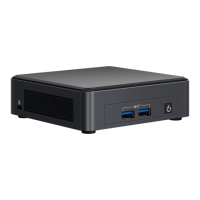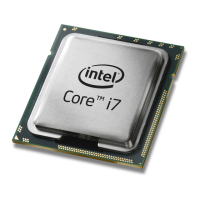Manually Configuring Duplex and Speed Settings
Configuration is specific to your operating system driver. To set a specific Link Speed and Duplex mode, refer
to the section below that corresponds to your operating system.
CAUTION: The settings at the switch must always match the adapter settings. Adapter per-
formance may suffer, or your adapter might not operate correctly if you configure the adapter
differently from your switch.
The default setting is for auto-negotiation to be enabled. Only change this setting to match your link partner's
speed and duplex setting if you are having trouble connecting.
1. In Windows Device Manager, double-click the adapter you want to configure.
2. On the Link Speed tab, select a speed and duplex option from the Speed and Duplex drop-down
menu.
3. Click OK.
More specific instructions are available in the Intel PROSet help.
Advanced Tab
The settings listed on Intel PROSet for Windows Device Manager's Advanced tab allow you to customize
how the adapter handles QoS packet tagging, Jumbo Packets, Offloading, and other capabilities. Some of the
following features might not be available depending on the operating system you are running, the specific
adapters installed, and the specific platform you are using.
Adaptive Inter-Frame Spacing
Compensates for excessive Ethernet packet collisions on the network.
The default setting works best for most computers and networks. By enabling this feature, the network
adapter dynamically adapts to the network traffic conditions. However, in some rare cases you might obtain
better performance by disabling this feature. This setting forces a static gap between packets.
Default Disabled
Range l Enabled
l Disabled
Direct Memory Access (DMA) Coalescing
DMA (Direct Memory Access) allows the network device to move packet data directly to the system's
memory, reducing CPU utilization. However, the frequency and random intervals at which packets arrive do
not allow the system to enter a lower power state. DMA Coalescing allows the NIC to collect packets before it
initiates a DMA event. This may increase network latency but also increases the chances that the system will
consume less energy. Adapters and network devices based on the Intel® Ethernet Controller I350 (and later
controllers) support DMA Coalescing.
Higher DMA Coalescing values result in more energy saved but may increase your system's network latency.
If you enable DMA Coalescing, you should also set the Interrupt Moderation Rate to 'Minimal'. This minimizes
the latency impact imposed by DMA Coalescing and results in better peak network throughput performance.
You must enable DMA Coalescing on all active ports in the system. You may not gain any energy savings if it
